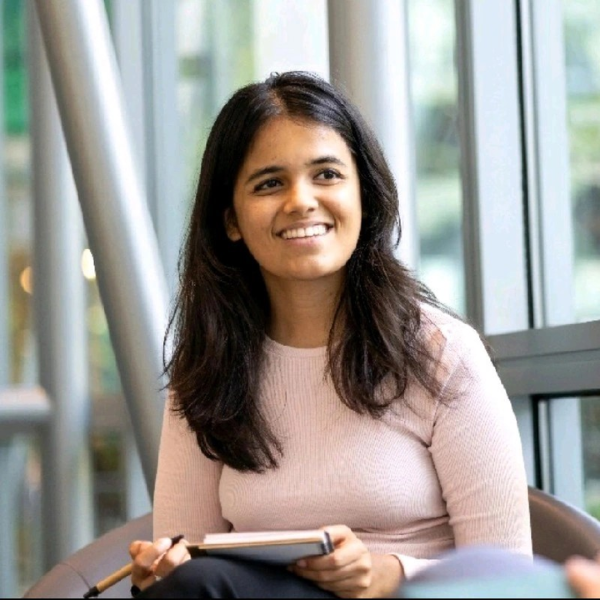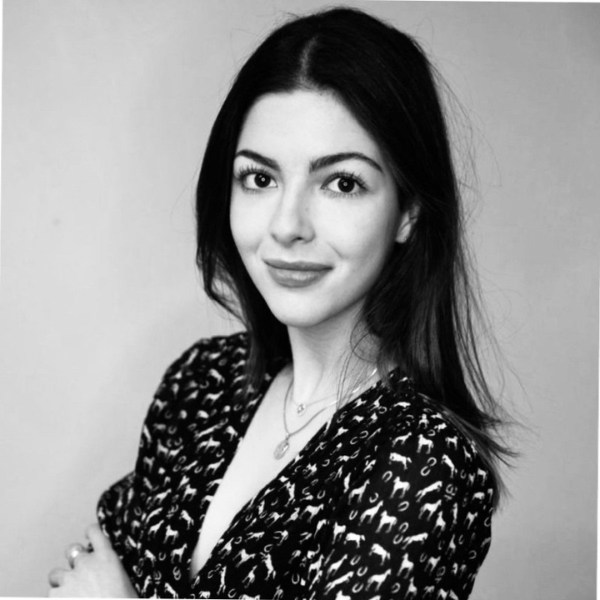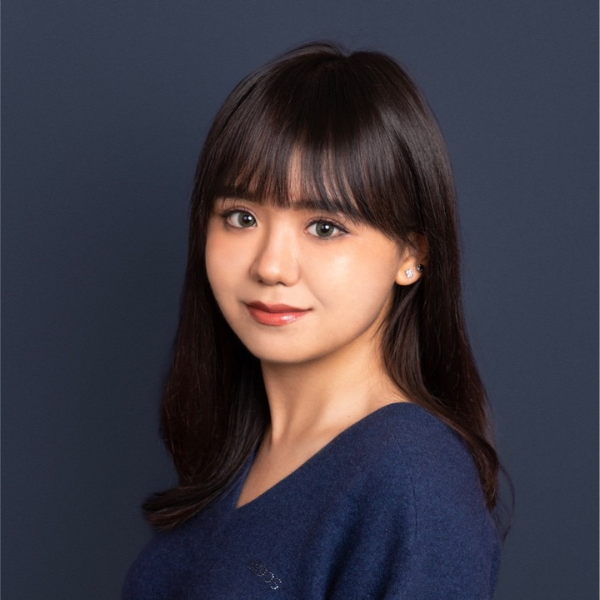Fonty gave depth and time to form close teams and a support network. Singapore brought breadth, pace, travel, and regional exposure.
Samruddhi Mane

Tell us about yourself.
I’m Samruddhi from Pune, India. I studied chemical engineering, worked as a software engineer, and always wanted to move into sustainability. I chose INSEAD to pivot intentionally into that space and to build a career in Singapore. Very early on, I told my CDC coach Emmanuelle Lansari, “My two goals are sustainability and Singapore.” Within a month, she was connecting me with alumni, short-listing companies, and shaping my networking plan. On campus, I helped lead the INSEAD Climate Run and Earth Week. Post-INSEAD, I interned at ENGIE Impact in Singapore and converted to full-time—I’m about a year in now.
Why INSEAD and the MIM?
Sustainability is broad, and coming from an engineering background, I had a choice to continue working towards the engineering aspect of sustainability or pivot towards the broader business and strategy aspects of it, helping companies transform at the big-picture level.
Europe’s leadership on climate policy made a European school a must, and INSEAD stood out for its “force for good” ethos and truly international cohort.
The move from software engineering to sustainability was driven by experience during my earlier semester exchange in Sweden that showed me that impact work could be a career, not just weekend volunteering; INSEAD gave me the global lens and diverse classmates to make that real.
What moments from the programme were most memorable?
Building community across both campuses. Fontainebleau felt like “slow life” in the best way, space to bond and work deeply in teams. Singapore was fast-paced with travel and events everywhere. Also: leading the initiatives like Climate Run and Earth Week, and seeing speakers like Georgina Grenin (Sustainability Director, Paris Olympics) spark real conversations about climate across the cohort.
You made the Dean’s List and received a scholarship—how?
I didn’t arrive targeting awards, financial statements, and all the business jargon were alien to me at first—but engaging professors made the content click.
A strong home group pushed each other to “go one step further” on projects. The scholarship eased tuition pressure (I’d only worked two years), which helped me stay focused on learning.
How did the CDC support your pivot into sustainability in Singapore?
- Clarifying my story: We translated my engineering/tech background into transferable skills, rewrote my CV, and drilled a tight 90-second pitch.
- Market reality & strategy: We mapped work authorisation constraints in Singapore and built a sequence (e.g., internship → conversion) to maximise sponsorship odds, focusing on firms where that was realistic.
- Consistency under pressure: Regular check-ins with Emma were anchors when the search felt overwhelming.
What did you lead outside the classroom, and how did it help?
I co-led the Climate Run and Earth Week. Tangible outcomes:
- Peer engagement: Dozens of candid conversations about climate challenges in classmates’ home countries and how to bring sustainability into our next roles.
- External network: Organising events created warm intros to practitioners we later leaned on for insights and referrals.
Any advice for students who want to pivot—especially into sustainability?
- Stack small wins: Before INSEAD, I did a short stint at a SaaS startup building sustainability products—not the dream role, but directional. On campus, I added initiatives, targeted electives/ISPs, and a couple of certifications to build credibility.
- Be specific and persistent: Pivots are tougher than staying in-lane. Doubt shows up—hold your direction.
- For sustainability: The field is evolving fast (ESG disclosure → business case). Don’t just read—talk to people to stay current on what’s actually changing.
How did your INSEAD learning show up in your first projects?
Directly. My ISP with Prof. Lucie Tepla on Nature Risk became my first ENGIE Impact project—the team needed nature-risk capability, and I’d just built it. More broadly, I rely daily on the business foundations I learned (new to me pre-MIM) and the global fluency from working with classmates across cultures.
What’s it like working in Singapore at ENGIE Impact?
Our team is very diverse, and projects span APAC—I’ve supported clients across Singapore, Australia and Indonesia. That breadth accelerates learning and opens future options. Practical tip: sponsorship varies, so speak to people inside target firms. A quick heuristic: if you see another MIM there, the company likely sponsors.
How did the cross-campus setup shape your perspective?
Fonty gave depth and time to form close teams and a support network. Singapore brought breadth, pace, travel, and regional exposure. The contrast taught me to shift gears quickly without losing cohesion.
What would you tell your August 2023 self?
Make time for fun. I skipped too many Fonty gatherings, stressing about jobs. The job comes; the cohort moments don’t. Take two more trips and say yes to the dinners.
Any final lesson you’d pass on?
Be tolerant with yourself and others. The first weeks are loud—everyone seems to have “built three mountains.” Don’t compare your page 3 to someone else’s page 300. You’re here for your own strengths and growth—and that’s enough.




